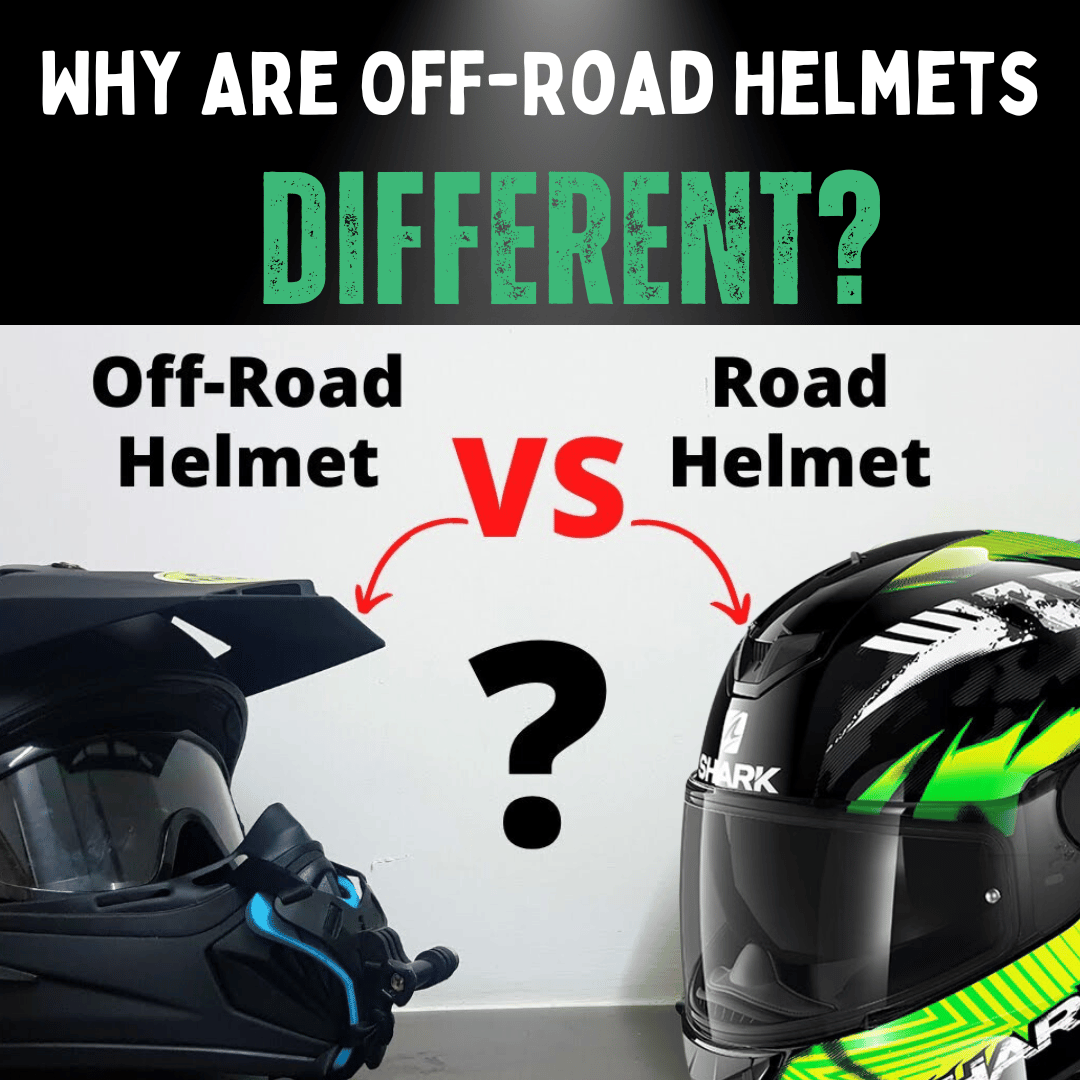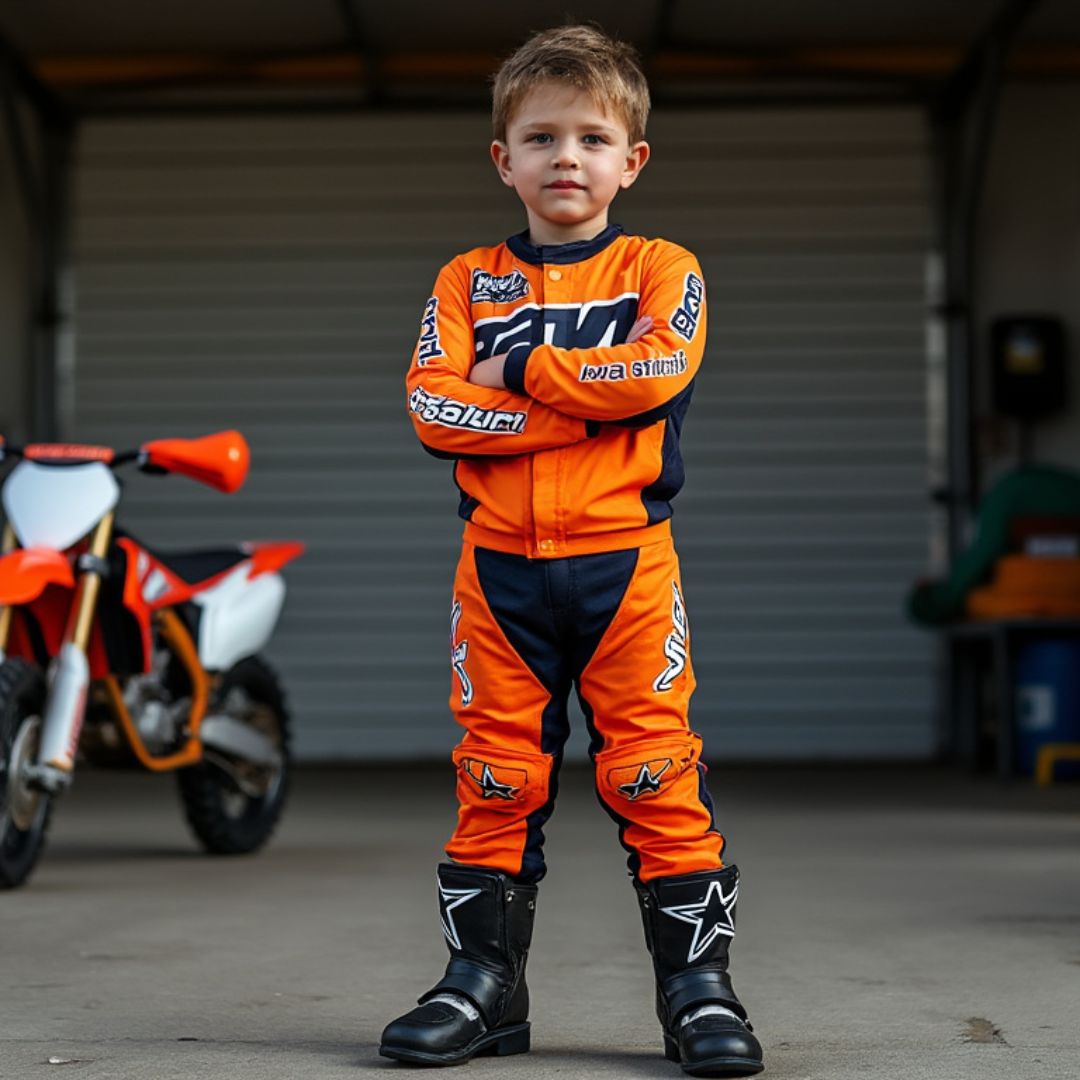
Have you ever wondered why dirt bike helmets look so different from the regular ones you see on city riders or cruisers?
It's not just about style (though they look pretty cool).
There's a bunch of science, design, and practicality packed into those helmets, designed specifically for the bumps, jumps, and challenges of off-road riding.
Today, we're diving deep into what sets dirt bike helmets apart from their regular counterparts.
Differences Between Dirt Bike Helmets and Regular Helmets
Design and Construction
First off, dirt bike helmets are like the Swiss Army knives of the helmet world.
They're tailored for the rough and tumble of off-road trails. These helmets come with visors to shield your eyes from mud splatters and the sun.
The ventilation is next level – because let’s face it, off-roading is hard work, and you’re going to sweat.
Plus, they're built tough to handle the occasional 'oops' moments that are all part of the fun.
Impact Protection
Here’s where it gets serious. Dirt bike helmets are like your personal head bodyguards.
They use advanced materials and technology to absorb impacts that can come from any direction – because off-road, the ground isn't the only thing you might hit.
Trees, rocks, you name it, these helmets are designed to take the hit for you.
Weight and Durability
Nobody wants a neck ache after a day of riding, right?
Dirt bike helmets are lighter than your average helmet but don't think for a second that means they're not as tough.
They're built to withstand the harsh conditions of off-road riding without weighing you down.
Visibility and Goggle Compatibility
Goggles are a must in the dirt biking world, and these helmets are designed to fit them perfectly.
The visors not only help in keeping the sun out of your eyes but also make sure your goggles stay put.
Plus, they ensure nothing obstructs your vision because seeing is, well, pretty important when you're navigating through uneven terrain.
Related: How Do You Clean Dirt Bike Goggles and Lenses?
Chin Protection
That extended chin bar isn't just for looks – it's a crucial protective feature.
It provides extra protection against frontal impacts, which, let's face it, are more common in off-road adventures.
It's all about keeping you safe, so you can enjoy the thrill without the spill.
Aerodynamics and Speed Management
Unlike their road-going counterparts, dirt bike helmets are designed with a focus on low-speed aerodynamics and maneuverability rather than outright speed.
This is because off-road riding involves a lot of slow-speed technical sections, sudden stops, and quick starts.
The shape of a dirt bike helmet is optimised to reduce drag at these lower speeds, helping riders move more freely and with less fatigue.
Additionally, the visors on dirt bike helmets are designed to manage airflow without lifting at high speeds, ensuring stability and control when the pace picks up.
| Aspect | Dirt Bike Helmets | Regular Helmets |
|---|---|---|
| Design and Construction | - Designed for off-road riding with features like visors, enhanced ventilation, and durable construction. | - Primarily for on-road use with a focus on aerodynamics and often include face shields for protection. |
| Impact Protection | - Engineered for superior impact protection in high-speed crashes and rough terrain. | - Designed to withstand high-speed impacts typical in road riding scenarios. |
| Weight and Durability | - Lighter in weight to reduce fatigue during off-road riding and built to withstand rugged conditions. | - Generally heavier due to additional features like face shields and aerodynamic designs. |
| Visibility and Goggle Compatibility | - Accommodate goggles for eye protection, provide a broader field of vision, and shield from debris. | - Often equipped with face shields for eye protection without the need for goggles. |
| Chin Protection | - Feature extended chin protection to safeguard against impacts and debris common in off-road environments. | - Chin protection may be less pronounced compared to dirt bike helmets due to different impact risks. |
| Safety Standards | - Adhere to safety standards tailored for off-road riding, ensuring protection in motocross and dirt biking scenarios. | - Meet safety standards specific to road riding, emphasising protection at high speeds on paved surfaces. |
| Style and Graphics | - Often feature aggressive graphics catering to motocross enthusiasts' style preferences. | - Designs may vary but typically focus on aesthetics suitable for road riding without the need for extreme graphics. |
Importance of Using a Dirt Bike Helmet
Enhanced Protection
We've touched on this, but it bears repeating: the off-road environment is unpredictable, and the enhanced protection of a dirt bike helmet is not just a luxury; it's a necessity.
These helmets are designed to protect against the higher risks of off-road riding, making sure that fun doesn't turn into a hospital run.
Comfort and Performance
Comfort is key, especially when you're riding through challenging terrains.
The design features of dirt bike helmets – from ventilation to lightweight materials – all add up to a more comfortable ride.
And when you're comfortable, you perform better. It's as simple as that.
Psychological Benefits of Proper Gear
Wearing the right helmet does more than protect your head; it also plays a significant role in your mental state while riding.
Knowing you're well-protected can boost your confidence, allowing you to focus on your riding techniques rather than worrying about potential injuries.
This peace of mind is crucial, especially when tackling challenging off-road trails.
A helmet that fits well and feels comfortable also reduces distractions, making your ride not just safer but more enjoyable too.
It's a win-win: enhanced safety through better focus and increased enjoyment on the trails.
Legal Requirements
In the UK, strapping on a dirt bike helmet isn't just about safeguarding your head—it's also a legal matter when you hit the road.
Here’s the breakdown:
-
Safety Standards: Hitting the road on your motorcycle or moped? You're legally required to wear a helmet that passes muster with British safety standards. Your helmet should either comply with the British Standard BS 6658:1985 and sport the BSI Kitemark, adhere to the UNECE Regulation 22.05, or align with any standard recognised by a European Economic Area member that matches the safety and protection level of BS 6658:1985 and bears a mark equivalent to the BSI Kitemark.
-
Protective Clothing: While the law doesn’t spell it out for other protective gear, decking out in specialised motorcycle wear is a smart move for extra safety.
Role in Preventing Traumatic Brain Injuries
This is the heavy stuff, but it's important. Traumatic brain injuries are a serious risk in any form of riding, and dirt biking is no exception. Wearing the right helmet can drastically reduce your risk of a life-altering brain injury. It's a no-brainer (pun intended).
Maintenance and Care Tips for Dirt Bike Helmets
Regular Inspection
Just like your bike, your helmet needs regular check-ups. Look for signs of wear and tear, and make sure it's still up to the task of protecting your head.
A little care goes a long way in maintaining its protective qualities.
Cleaning and Storage
After a day on the trails, your helmet can get pretty gnarly. Clean it according to the manufacturer's instructions to keep it in top shape.
And when you're not using it, store it properly to avoid accidental damage.
Replacement Schedule
All good things must come to an end, and that includes your helmet.
Regular use, wear, and exposure to the elements can degrade its protective capabilities over time.
So, know when to say goodbye and get a new one to ensure you're always protected.
Impact Damage Assessment
Took a tumble? Make sure to give your helmet a thorough check.
Even if it looks okay, the integrity could be compromised after a significant impact. When in doubt, replace it. Better safe than sorry.
Maintenance and Care Tips for Dirt Bike Helmets
Customisation and Personalisation
Customising your dirt bike helmet is a great way to stand out on the trails and express your personality.
However, it's essential to ensure that any modifications or additions don't compromise the helmet's safety features.
When personalising your helmet, consider using reflective stickers or decals to increase visibility, especially if you often ride in low-light conditions.
Additionally, many helmet manufacturers offer customisable padding kits that not only allow for a better fit but also let you add a personal touch to the interior.
Always remember, the primary goal is safety, so any customisation should enhance, not hinder, your helmet's protective capabilities.
Keep modifications superficial and avoid altering the structure or safety features of the helmet.
Conclusion
We've covered a lot of ground today, and if there's one thing to take away, it's this: choosing the right dirt bike helmet is crucial.
It's not just about compliance or even comfort; it's about your safety.
With the right helmet, you're not just ready for the adventure ahead; you're also prepared for the unexpected.
FAQ: Understanding Dirt Bike Helmets for Young Riders
What makes dirt bike helmets safer for children and teenagers engaging in off-road riding?
Dirt bike helmets for young riders are engineered with specific features that cater to the unpredictable nature of off-road terrain. These helmets are designed to provide superior protection against impacts from various angles, which are more common in off-road environments. Their construction focuses on lightweight materials to reduce neck strain and fatigue, making them safer and more comfortable for children and teenagers. Additionally, the enhanced ventilation systems in these helmets help keep younger riders cool and focused, further contributing to their safety while riding.
How do I choose the right size dirt bike helmet for my child or teenager?
Selecting the correct size is crucial for maximizing the helmet's protective capabilities. Start by measuring the circumference of your child's head at the widest point, usually about an inch above the eyebrows. Compare this measurement with the sizing chart provided by the helmet manufacturer. It's important for the helmet to fit snugly but comfortably; there should be no excessive movement when your child shakes their head. For growing children, consider helmets with adjustable interior padding to accommodate slight growth without compromising safety.
Can dirt bike helmets be used for other sports or activities, like cycling or skateboarding?
While dirt bike helmets are specifically designed for off-road motorcycling, their robust construction and safety features may offer protection in other activities. However, it's essential to understand that helmets are purpose-built for the dynamics and specific risks associated with different sports. For optimal safety, it's recommended to use sport-specific helmets. For example, skateboarding helmets are designed to protect against multiple falls, whereas dirt bike helmets are optimised for single high-impact collisions. Always prioritise using the right equipment for each sport to ensure your child's safety.
Get in Touch 🚀
Loved our article on “Here's Why Dirt Bike Helmets Are Different to Regular Helmets” Got the itch to dive into more wheely-awesome info?
Whether you're a parent or a grandparent, we're here for all your kids ride-on toy questions! 🚗💨
Feeling click-happy?
Jump straight into our wonderland at RiiRoo.com.
Or, if you're more the chatty type, give our Live Chat a whirl and let's talk toys!









Share:
How to Select the Perfect Kart Track For Your Kid
5 Things Your Kids Should NEVER do on a Motorbike